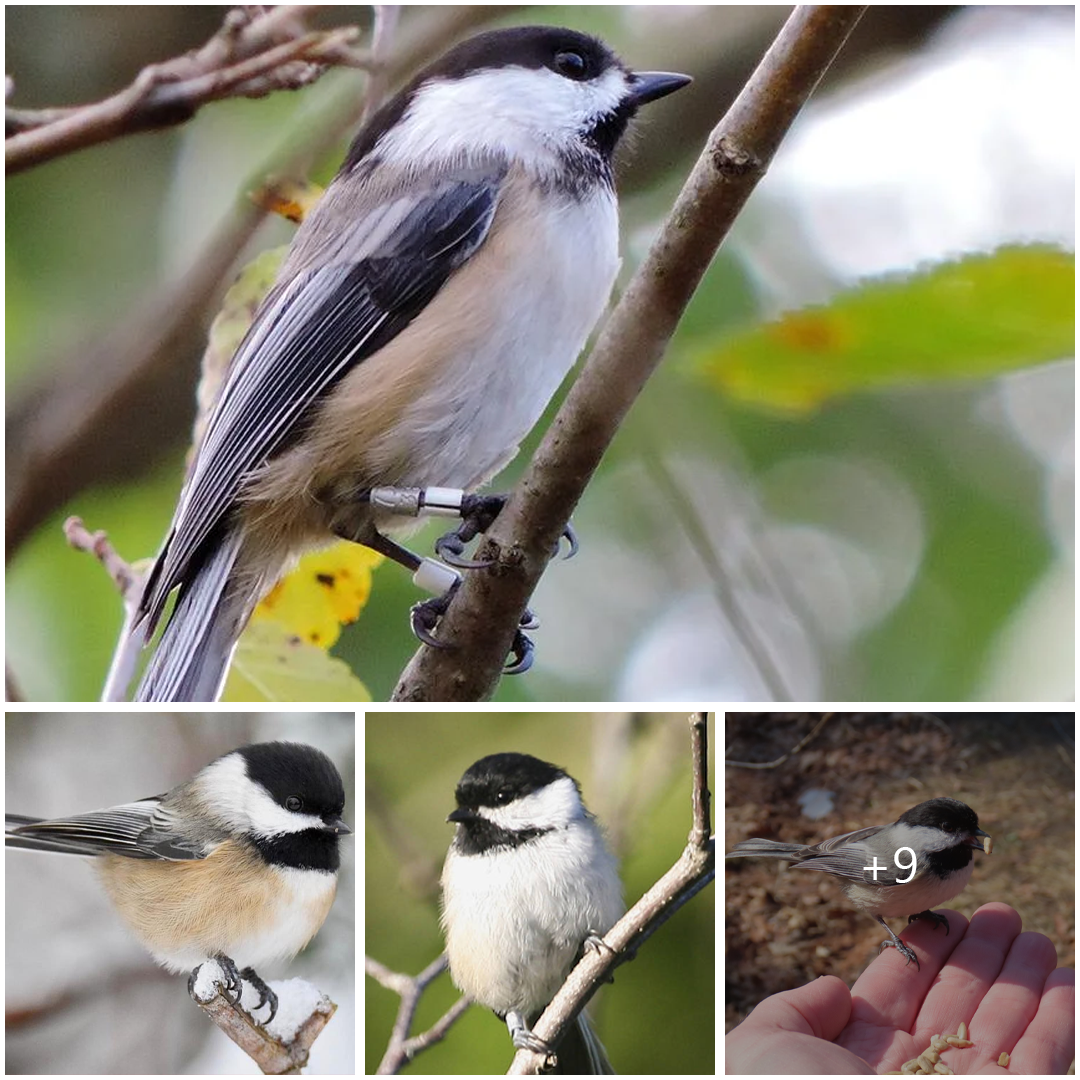
The black-capped chickadee (Poecile atricapillus) is a beloved and charismatic bird species that inhabits the woodlands of North America. Known for its distinctive appearance, cheerful demeanor, and delightful vocalizations, this small songbird holds a special place in the hearts of birdwatchers and nature enthusiasts alike.
Appearance and Identification: Measuring approximately 11 to 14 centimeters in length, the black-capped chickadee is a compact bird with a rounded body and short, stout bill. Its plumage features a striking combination of black, white, and gray, with a black cap and bib contrasting sharply against its white cheeks and throat. The back and wings are predominantly gray, while the underparts are a soft buff color. The chickadee’s plumage provides excellent camouflage among the trees and shrubs of its forest habitat, allowing it to blend in seamlessly with its surroundings.
Habitat and Distribution: Black-capped chickadees are found across a wide range of habitats throughout North America, from the boreal forests of Canada to the deciduous woodlands of the eastern United States. They are adaptable birds that inhabit a variety of environments, including forests, woodlots, parks, and suburban areas. These sociable birds are often found in mixed-species flocks, foraging for food and communicating with other members of their group.
Foraging Behavior: The black-capped chickadee is an active and agile forager that feeds primarily on insects, seeds, and berries. It has a varied diet that includes caterpillars, spiders, sunflower seeds, and fruit, which it gathers from the branches and foliage of trees and shrubs. Chickadees are known for their acrobatic feeding behavior, clinging to branches and twigs while probing for food with their sharp bills. They are also frequent visitors to backyard bird feeders, where they readily consume sunflower seeds and suet.
Vocalizations: One of the most endearing characteristics of the black-capped chickadee is its cheerful and distinctive vocalizations. The chickadee’s song is a simple yet melodious “chick-a-dee-dee-dee,” from which it derives its name. This vocalization serves as a contact call among members of a flock and helps to maintain social cohesion. In addition to its signature song, the chickadee produces a variety of other vocalizations, including alarm calls, mating calls, and territorial songs, each with its own unique pattern and function.
Breeding and Nesting: During the breeding season, male black-capped chickadees establish territories and engage in courtship displays to attract mates. Females build cup-shaped nests in tree cavities, old woodpecker holes, or artificial nest boxes, lining them with moss, fur, and soft plant fibers. They typically lay a clutch of 5 to 8 eggs, which are incubated for about 12 to 13 days. Both parents participate in feeding and caring for the young chicks until they fledge and become independent.
Conservation Status: The black-capped chickadee is a common and widespread species with a stable population throughout much of its range. However, like many bird species, it faces threats from habitat loss, fragmentation, and climate change. Conservation efforts focused on preserving and restoring forest habitats are essential for ensuring the continued survival of this beloved bird species and maintaining its presence in North America’s woodlands.
In conclusion, the black-capped chickadee is a charming and iconic resident of North America’s forests, beloved for its distinctive appearance, cheerful demeanor, and delightful vocalizations. As a symbol of resilience and adaptability, this endearing songbird serves as a reminder of the beauty and diversity of our natural world and the importance of conservation efforts to protect our avian treasures for generations to come.





